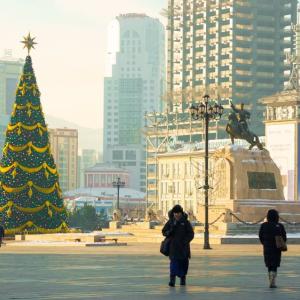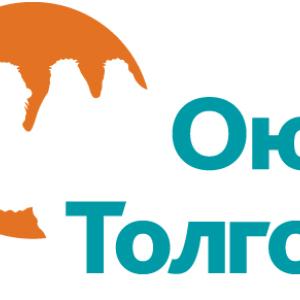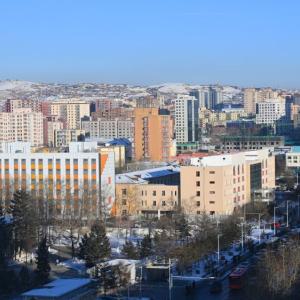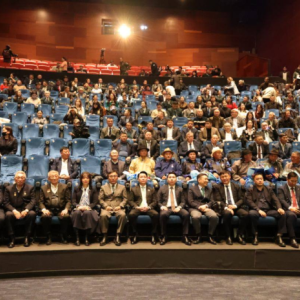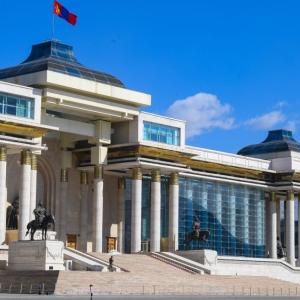Fitch Affirms Mongolia at 'B': Outlook Stable
Economy
Ulaanbaatar, May 17, 2023 /MONTSAME/. Fitch Ratings has affirmed Mongolia's
Long-Term Foreign-Currency Issuer Default Rating (IDR) at 'B' with a Stable
Outlook.
Strong Growth, External
Vulnerabilities: Mongolia's ratings are underpinned by
favourable medium-term growth prospects and high per capita income relative to
'B' rated peers. The ratings are constrained by the country's high reliance on
external funding and commodity exports to China amid high external debt and low
foreign-exchange reserves. Mongolia scores well on World Bank Governance
Indicators relative to 'B' peers, but has suffered from political volatility
around issues of resource nationalism.
Growth Rebound: We
forecast real GDP growth of 5% in 2023, similar to 2022, on stronger mining
activity and steady domestic demand. Growth will likely accelerate in 2024.
Coal exports are rebounding after China's removal of border pandemic controls.
Export capacity will rise further once cross-border rail links become fully
operational in the next one-two years. The strategic Oyu Tolgoi copper mine's
underground phase started production in March 2023, although most of the volume
gains will only come from 2025. Other mining and infrastructure projects could
support medium-term growth.
External
Finances Stabilising: The export rebound is helping rein in
the current account deficit (CAD), which we expect to shrink to about USD1.7
billion-1.8 billion (about 9% of GDP) in 2023-2024, from about USD2.3 billion
(over 13% of GDP) in 2022. We expect inflows of FDI to cover the CAD. Official
foreign-exchange (FX) reserves recovered to USD3.7 billion in April 2023, from
a trough of USD2.7 billion in August 2022, while bank deposit dollarisation
stabilised at 37% of total deposits in March 2023, having risen from 24% at
end-2021.
External Finances Remain
Precarious: Net external debt, at 160% of GDP in 2023
will be around 6x the 'B' median, although over 30% of this is intercompany
lending (FDI), and over 20% is the government's bilateral and multilateral
loans on concessional terms, both of which we expect will continue to be stable
sources of funding. Reserve coverage ratios, though improved, remain weaker
than the 'B' median. Gross reserves are supported by about USD1.7 billion in
swap liabilities to the People's Bank of China, which we expect to be rolled
over, and similar amounts of FX liabilities to domestic banks.
Maturity Management: Just
over USD150 million in government external debt is due in the rest of 2023,
with the proceeds of a USD650 million issuance in January mostly used to repay
and exchange bonds maturing in May. The Development Bank of Mongolia (DBM) has
set aside reserves to repay a JPY30 billion (USD220 million)
government-guaranteed bond in December. The government is authorised to
guarantee DBM bonds maturing in October (about USD437 million outstanding),
which we assume will be used to roll them over. Government external debt
maturities in 2024 are USD680 million.
Narrow Fiscal Deficit: We
forecast general government fiscal deficits at under 1% of GDP in 2023-2024,
after a surplus of 1% of GDP in 2022, reflecting our expectation that higher
spending will offset the boost to revenue from the mining sector and inflation.
Last year's fiscal outturn marked a significant turnaround from the 3% of GDP
deficit in 2021. The government originally budgeted a deficit of under 2% of
GDP in 2023, but has since raised its projection for mining revenue by over 1%
of GDP.
Commodity Dependence, Risks: The
outlook for external finances is highly sensitive to commodity revenues, which
account for 90% of total external receipts and 30% of government
Inflation Peaking; Monetary
Stance Mixed: We expect headline inflation to average 12% yoy
in 2023, from an average of over 15% in 2022, before moderating to 9% in 2024,
slightly above the BOM's 4%-8% target. Full normalisation of trade with China
and lower global commodity prices should exert a downward pull on inflation,
although international sanctions on Russia are still leading to elevated import
costs. The BOM raised its policy rate to 13% in December, bringing cumulative
hikes in 2022 to 700bp.
Banking System Stable:
Non-performing loans have remained steady at about 10% of total sector loans,
although underlying asset quality issues may be masked by high nominal growth,
ongoing subsidised lending programmes and a moratorium on mortgage repayments,
which only ended in December 2022. The BOM completed an asset quality review of
domestic systemically important banks (D-SIBs), and three of the five D-SIBs
have already launched IPOs to reduce shareholder concentration, meeting a BOM
requirement to do so by June 2023.
Sourse:
FitchRatings
 Ulaanbaatar
Ulaanbaatar





























